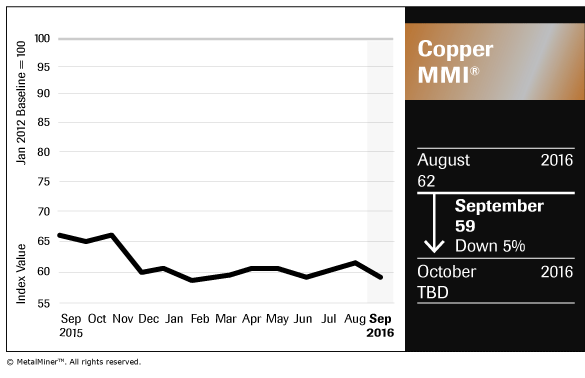Last month, Business Insider ran a piece saying “Recent movements in copper inventories highlight the lack of significant demand for the metal, particularly in the ever-important Chinese market.”
Shanghai Futures Exchange inventories are falling while London Metal Exchange inventories are rising, suggesting metal is flowing out of Shanghai bonded warehouses into local Asian LME sheds.
The contango has grown, allowing traders to store and hedge metal on the LME, supporting the move, but the fact that refined metal is flowing out China suggests industrial demand is weak. BMI calls the move a red flag and says it expects imports of refined metal to fall in the coming months.

Yet, just last week, better-than-expected official industrial PMI numbers unexpectedly rose to the highest level since 2014, according to Bloomberg, resulting in a bounce in copper prices, share prices in Hong Kong and London and a fall in bond prices.
What’s Up With Copper?
So, what does this mean for copper? Was the export surge a temporary phenomenon prompted by the market moving into contango? Or is this truly a sign of an underlying weakness in demand?
China imported a record amount of refined copper in the second half of 2015, partly fueled by a relaxation of credit controls and encouraged by Beijing’s stimulus plans. Domestic refined production also increased significantly, but refiners are now cutting back and appear well supplied with concentrate in what remains an oversupplied market.
In spite of the rise in short positions, investor pessimism has more to do with the oversupply position in the copper market than a fear that Chinese demand is collapsing. The impact of stimulus measures adopted late last year is said to be tailing off, but the Chinese economy is doing okay as recent figures show.
This isn’t boom time, but for an economy deliberately focusing on consumption, the manufacturing sector is doing relatively well. The “problem” for copper is not a collapse in demand, rather it is tepid demand in the face of oversupply, a position that is unlikely to change this year or next.
Copper has been out performed by zinc, nickel, tin, and even iron ore this year, and most analysts are expecting prices to fall from current levels as the disparity in supply becomes more obvious.
So, rather than a red flag copper, exports from China are more a symptom of oversupply and changes in LME storage costs and hedging opportunities than a collapse in demand for the world’s largest consumer. The good news for consumers elsewhere is oversupply should keep prices suppressed for some time to come, on current expectations of Chinese growth and consumption.
